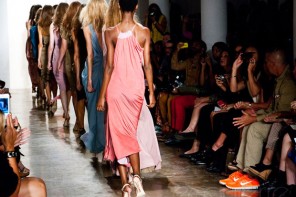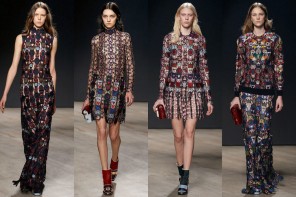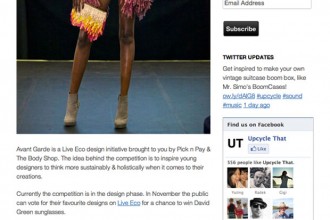Written by: Nicole Canning
One of my favourite quotes is that of the Italian fascist leader Mussolini, who told Hitler in 1930: “Any power whatsoever is destined to fail before fashion. If fashion says skirts are short, you will not succeed in lengthening them, even with the guillotine.”
It was with these words in mind that I commenced exploring the idea of how being eco-conscious should affect our fashion choices. It surely doesn’t take a lot to don an organic cotton tee, especially when it´s all the rage, but when it comes to the real crunch, does the power of the eco-revolution have what it takes to bring us to the point of sacrificing our wardrobe for truly green choices?
In vogue
Wikipedia defines sustainable fashion, or eco-fashion, as “being part of the larger trend of sustainable design, where a product is created and produced with consideration to the environment and social impact it may have throughout its total life span, including its carbon footprint.” In May 2007 Vogue announced that it appears to “not be a short-term trend, but one that could last multiple seasons.”
It didn’t take long for designers, models and celebrities to be seen sporting clothing that incorporated sustainable practices, and the trend soon filtered down to the eco-offering that we see on shop shelves today. It includes things like organic cotton (though all cotton has a large carbon footprint for its cultivation and production, organic cotton is considered a more sustainable choice as it is free of destructive toxic pesticides and chemical fertilizers), recycled fibres (made from scraps of fabrics collected from clothing factories, which are processed back into short fibres for spinning into a new yarn), bamboo fibre (which absorbs greenhouse gases during its life cycle and grows quickly and plentifully without pesticides), and hemp (one of the best choices for eco fabrics due to its ease of growth, though it remains illegal to grow in some countries).
Many of the big international design labels have launched environmental collections. H&M has “the Garden Collection” which is made using organic/recycled materials and which have been produced using sustainable materials or recycled PET bottles or textile waste. Locally, Urban Outfitters have their “re-urban” range and Corne Edwards is making waves with her ReCotton designs.
Out of season
“Of course, there is also the new multi-functional trend happening at the moment,” comments Anri Landman, a Masters student at the Sustainability Institute in Stellenbosch, Western Cape. “An example is American Apparel´s Le Sac Dress, which can be worn in seven different ways.” These kinds of designs lean towards the idea of introducing the concept of “reduction” into fashion. This of course, is where the crunch comes in. Part of the problem with truly adopting eco-fashion is the very nature of fashion itself. Keeping on-trend means wearing clothes that are only designed to be used for a season or two.
A vintage alternative?
Landman comments that, like everything else, eco-fashion can quickly be swept up to become a marketing tool, which is not what it´s about. “The best bet would be to scale down to the basics, to buy vintage as far as possible, and then to invest in good quality environmentally friendly fabrics like bamboo, when you find something that is going to last a lifetime.”
Carla, 28, agrees that the truly eco-friendly fashion choice is to wear vintage. Why? “Because it is not only the most creative and individual choice around, it is also the most sensible way to reduce extreme consumption. Recycling your old clothes and wearing vintage clothes and accessories is not only a fashion statement, it is an ecological and philosophical statement too.”
Playing our part
To me, the idea of keeping the same pair of trousers for a lifetime still requires a mindset change of note. I simply can´t imagine models on the cover of Cosmo wearing drape dresses season after season; I can´t fathom human nature compromising on appearance. But perhaps that’s not what it´s about. Perhaps it´s about making small changes – adding something organic from time to time, thinking more creatively about what we currently own, and slowly but surely embracing a social change that won´t ever go out of fashion.
What do you think? Would you be willing to buy clothing that is less trendy that you could use through more seasons? Are you willing to pay more if need be for sustainable fabrics? Can you begin to see fashion as less disposable?
The liveeco team




